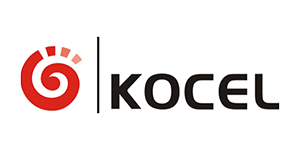3D Sand Printing Casting A Revolutionary Manufacturing Process
In recent years, the manufacturing industry has witnessed a significant transformation with the advent of 3D printing technologies. One of the most innovative applications is 3D sand printing casting, which combines the benefits of additive manufacturing with traditional casting methods. This technology is reshaping how industries approach prototyping and production, offering increased efficiency, design flexibility, and reduced costs.
3D Sand Printing Casting A Revolutionary Manufacturing Process
One of the most significant advantages of 3D sand printing casting is its design freedom. Traditional casting methods are often limited by the capabilities of the tooling, which can restrict complex geometries. However, with 3D printing, manufacturers can easily create geometrically complex shapes that would be impossible or prohibitively expensive to produce using conventional methods. This enables the production of lightweight structures, intricate cooling channels, and customized designs tailored to specific functional requirements.
3d sand printing casting

Moreover, the efficiency of 3D sand printing dramatically reduces lead times. As there is no need for extensive tooling, prototypes can be produced rapidly, allowing for quicker iterations and faster time-to-market. This is particularly beneficial in industries where product development cycles are becoming increasingly short. Engineers and designers can test and modify their designs with minimal delay, fostering innovation and creativity.
Cost savings is another critical factor driving the adoption of 3D sand printing casting. Traditional sand casting often involves considerable material waste, especially when machining down metal castings to achieve the desired specifications. In contrast, 3D sand printing allows for a more precise use of materials, reducing waste and lowering overall production costs. Additionally, the reduced labor and manufacturing times contribute to significant savings.
As sustainability becomes an increasingly important consideration in manufacturing, 3D sand printing also presents environmental benefits. The process generates less waste and can use sand that is recycled from previous molds, thus contributing to a more sustainable production cycle. Furthermore, the ability to produce only what is necessary minimizes overproduction, a critical issue in many industries today.
In conclusion, 3D sand printing casting represents a paradigm shift in manufacturing, blending the advantages of modern technology with traditional techniques. Its ability to offer design flexibility, enhance efficiency, reduce costs, and promote sustainability positions it as a leading method for future manufacturing processes. As industries continue to explore the possibilities of this innovative technology, the potential for new applications and advancements remains vast, paving the way for a new era in manufacturing.
Post time:Oktoba . 15, 2024 18:50
Next:आधार वाळ्याचे गुणधर्म
